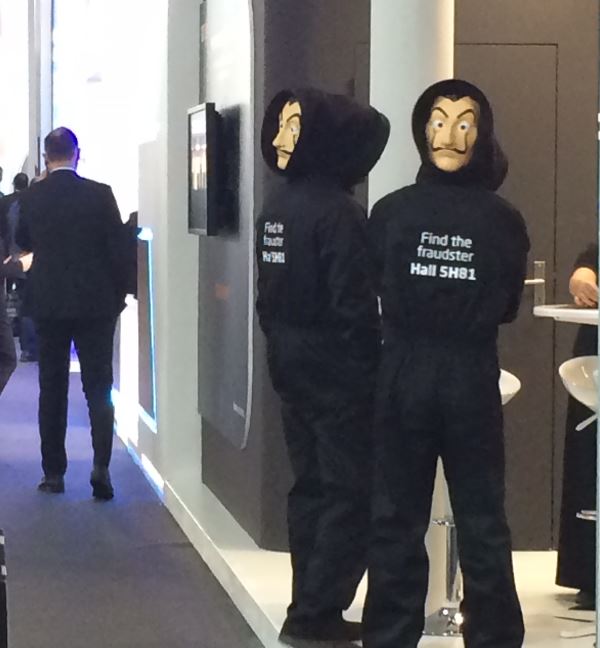I am often asked by clients how to build trade show buzz and booth traffic. There are of course some classic ways to drum up traffic, such as offering freebies of some sort.
It can be especially challenging when you’re a small startup with limited funds, as are most of our clients. They’re competing against well-known companies that have massive tricked out booths, and also trying to steal attention from other strivers.
The difficulties of rising above show noise were never more apparent than at MWC, the annual mobile industry confab, which I attended last month in Barcelona. It’s an extravaganza, with eight cavernous halls, thousands of exhibitors, and over 100K attendees.
To get answers to the above question, I treated the show as a field experiment, paying close attention to what stood out. Which exhibits were eye-catching? What tactics drew crowds? Which ads and signage pulled me in?
Competing with the Big Boys
If you’re Samsung or Nokia, you can build a vast presence to dominate the show floor. Others did too, like Huawei, Ericsson, and ZTE. Their booths were like shows within a show; department stores displaying consumery goods and atractions, or the mini-smart cities that some tried to replicate.
There were robots playing piano and drums at the ZTE booth and live bands elsewhere
Immersive VR was another crowd pleaser: several exhibits let people don headsets and drive race cars or step into a video game to virtually battle each other – all to the delight of passersby too. These looked fun – but seemed to limit flow and traffic, as only a couple of people could participate at a time.
Startups had the challenge of stealing attention from these and hundreds of other, less glitzy displays.
Small Players Get Creative
So, what did work for the smaller exhibitor? A few tactics stood out.
Stand and Deliver
Polished speakers pitching at timed intervals drew audiences. Granted, this was not even an option for the smallest booths, due to the seating needed.
Why does this tactic work? People are naturally drawn to an interesting presentation – using a mic and
Sleight of Hand
One booth attracted people with a shell game. The presenter cleverly wove the pitch into the routine. This tactic drew a smaller, more intimate audience than above as you had to lean in to observe and listen. There was no need for extra seating – people swarmed the booth and watched from the aisles, a good thing: crowds attract crowds.
Work the Crowd
Some exhibitors drew attention via colorful characters who roamed the show floor and mixed with attendees handing out swag or game clues. The ones below had hoods with business in front (namely, their faces) and party in the back (Guy Hawkes AKA Anonymous hacker masks).

I have no idea how successful the gambit was; but it caught my attention.
Eye Candy
Other booths used lasers or beautiful video displays to draw attention. E.g. Enensys Networks featured a simple yet powerful array of cell phones that piped in striking video. Their live 5G broadcast demo showed how operators will soon be delivering HD video quality on a large scale.

The Ultimate Showmanship
There is no substitute for an offering that hits all the right buttons. Combine this with a clear message and tactics like the above, and you get the ultimate: not just traffic but the right kind of traffic, namely potential customers with a sincere interest in the display and solution.
Orchestration vendor Cloudify pulled off this feat. They announced their Spire edge orchestration solution at the show. Cloudify Spire connects and controls distributed networks, devices, and applications from the core to the edge – it is a great answer to the pressing need to bring sprawling IoT and other edge devices into the fold and help enterprises and telcos deploy SD-WAN and 5G.
Anna Burukhin of Buzz Hunter helped design a booth that conveyed that message, in a simple and powerful way.
A 3D holographic-like display was extremely eye catching. Together – booth, messaging, and a compelling announcement/timely offering– consistently brought crowds to their booth.


